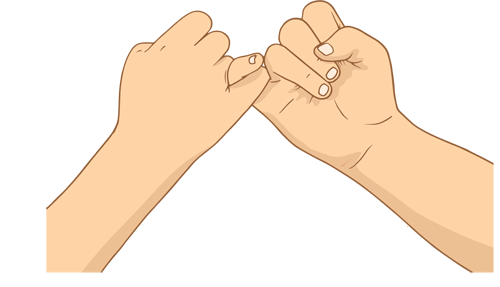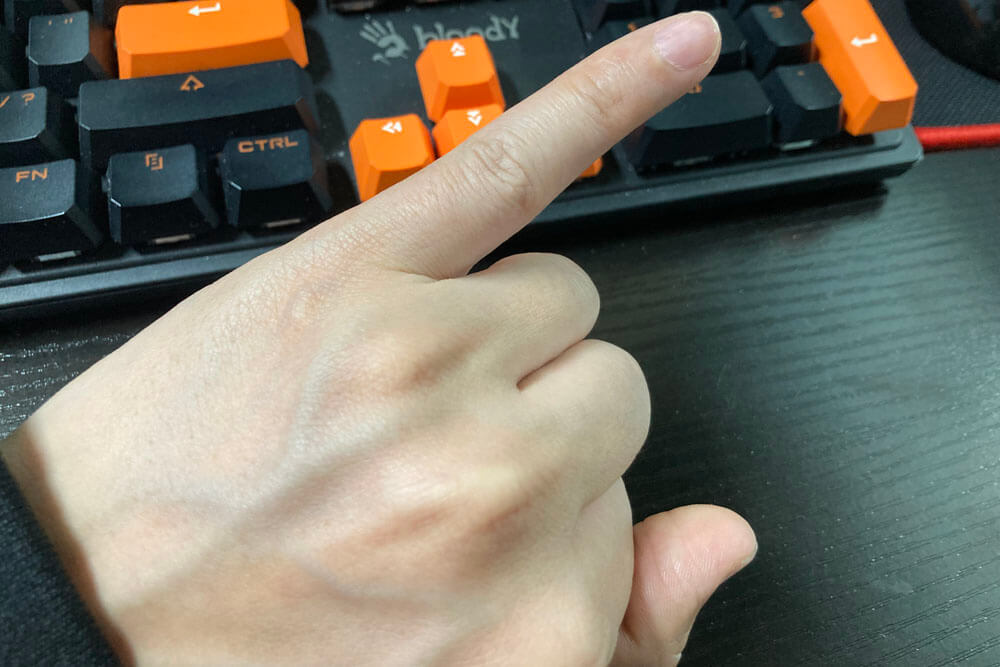Curious about cultural symbols and their meanings? Ever wondered what significance the pinky finger holds in Chinese culture? Well, get ready to delve into the intriguing world of Chinese symbolism as we explore the mysterious and often overlooked importance of the pinky finger in Chinese customs and beliefs.
From gestures of respect to expressions of social status, the pinky finger plays a surprisingly significant role in various aspects of Chinese society. Let’s uncover the hidden meanings behind this seemingly small yet culturally rich aspect of Chinese tradition.
How Chinese Call 5 Fingers Literally?
In Mandarin Chinese, each finger is assigned a specific name, which reflects its position and function. Here are the names of the five fingers with their respective Pinyin and explanations:
Thumb – 拇指 (mǔ zhǐ)
The character 拇 (mǔ) means “thumb” or “big toe,” indicating its larger size and importance for grasping objects.
Index Finger – 食指 (shí zhǐ)
The term 食 (shí) refers to “eating” or “consumption,” as this finger is commonly used for pointing at food or indicating direction while eating.
Middle Finger – 中指 (zhōng zhǐ)
中 (zhōng) translates to “middle,” indicating that this finger is centrally located among the five fingers.
Ring Finger – 无名指 (wú míng zhǐ)
无名 (wú míng) literally means “nameless” or “anonymous,” suggesting that this finger is not typically associated with a specific function or identity.
Pinky Finger – 小指 (xiǎo zhǐ)
小 (xiǎo) means “small,” highlighting the relatively diminutive size of the pinky finger compared to the others.
These literal translations offer insight into both the physical characteristics and cultural associations of each finger in the Chinese language and tradition.
Common Intent of Little Finger in China
while the little finger gesture in China commonly denotes making a promise or pledge, its interpretation can vary depending on the cultural context and the manner in which it is used.
Promise
In Chinese culture, the gesture of raising the pinky finger, often referred to as “little pinky promise” (拉钩承诺 – lā gōu chéng nuò), commonly signifies making a promise or pledge, particularly among children or close friends. When individuals intertwine their pinky fingers, it symbolizes a sincere commitment to keep a promise or uphold an agreement. This gesture is deeply rooted in trust and friendship, signifying a bond of loyalty and reliability.

Weak
Conversely, in certain contexts, the pinky finger can also convey a sense of weakness or inferiority. This interpretation stems from the notion that the pinky finger is the smallest and weakest among the five fingers. As such, using the pinky finger to gesture or emphasize a point may be perceived as indicative of a lack of strength or authority, leading to associations with being a “loser” or ineffectual in certain situations.
Gestures to Avoid in China
In China, as in many cultures, certain gestures can be considered offensive, disrespectful, or ambiguous. To ensure smooth interactions and avoid unintentionally causing offense, it’s essential to be mindful of the following gestures:
Pointing with the index finger
Directly pointing at someone or something with the index finger is considered impolite in Chinese culture. It can be interpreted as confrontational or disrespectful. Instead, it’s more appropriate to gesture with an open hand or use the whole hand to indicate direction.
Showing the sole of your foot
Similar to many Asian cultures, displaying the sole of your foot, whether intentionally or unintentionally, is seen as disrespectful in China. It’s considered one of the lowest parts of the body and showing it towards someone, especially in a gesture like crossing legs with the sole facing another person, can be offensive.
Using excessive hand gestures
While some hand gestures are acceptable in Chinese communication, excessive or exaggerated hand movements can be seen as distracting or insincere. It’s best to maintain a moderate level of hand gestures and be aware of cultural norms regarding body language.
Giving or receiving objects with one hand
When giving or receiving objects, it’s customary in China to use both hands as a sign of respect and politeness. Using only one hand can be perceived as careless or disrespectful, particularly when dealing with older individuals or in formal situations.
By being mindful of these gestures to avoid in China, visitors can navigate cultural differences more effectively and ensure respectful interactions with locals.
Polite and Safe Gestures to Use in China
When interacting in China, using polite and safe gestures can help foster positive communication and demonstrate respect for Chinese customs and traditions. Here are some gestures that are widely accepted and appreciated:
- Offering and receiving items with both hands: When giving or receiving objects, use both hands as a sign of respect and politeness. This gesture shows sincerity and acknowledges the importance of the exchange.
- Nodding and bowing slightly: A nod of the head or a slight bow can be used to show respect, gratitude, or agreement in Chinese culture. It’s a simple yet effective way to convey politeness and acknowledgement.
- Using open-handed gestures: Instead of pointing with the index finger, use an open hand or gesture with the whole hand to indicate direction or make a point. This is seen as more polite and less confrontational in Chinese communication.
- Smiling: A genuine smile is universally appreciated and can help create a positive atmosphere in any interaction. Smiling is particularly important in Chinese culture as it signals friendliness and approachability.
- Giving a slight handshake: When greeting someone, offer a gentle handshake with a slight bow of the head as a sign of respect. Keep the handshake firm but not overly strong, and maintain eye contact to convey sincerity.
- Using modest body language: In Chinese culture, modesty is valued, so avoid excessive hand gestures or overly expressive body language. Instead, maintain a calm and composed demeanor, and be mindful of personal space boundaries.
- Expressing gratitude: Saying “xièxiè” (谢谢) or “thank you” in Mandarin Chinese is a simple yet important gesture to show appreciation. Combine it with a slight bow or nod to convey sincerity.
By incorporating these polite and safe gestures into your interactions in China, you can navigate cultural differences with ease and demonstrate respect for Chinese customs and etiquette.
How Jinyu Can Help
As Jinyu Translation, our expertise in the Chinese language and culture can offer valuable assistance in various ways:
1. Local Travel Guide: When traveling to China navigating local customs, attractions, and services can be challenging for non-native speakers. Our translation services can provide comprehensive travel guides, offering insights into must-visit destinations, cultural etiquettes, and practical tips for an enriching travel experience. Whether it’s recommending hidden gems, explaining historical sites, or facilitating interactions with locals, our guides ensure a seamless and immersive journey.
2. Formal and Informal Communication Help: Effective communication is essential in both formal and informal settings. Our translation services cater to diverse communication needs, whether you’re conducting business negotiations, attending formal events, or engaging in casual conversations. We offer accurate translations of documents, presentations, and speeches, ensuring clarity and professionalism in your interactions. Additionally, our language experts can provide informal language coaching, helping you master colloquial expressions, slang, and conversational nuances for more authentic communication with locals.
By leveraging our expertise in Jinyu translation, travelers and businesses alike can navigate linguistic barriers with confidence, fostering meaningful connections and enhancing your experiences in China.

